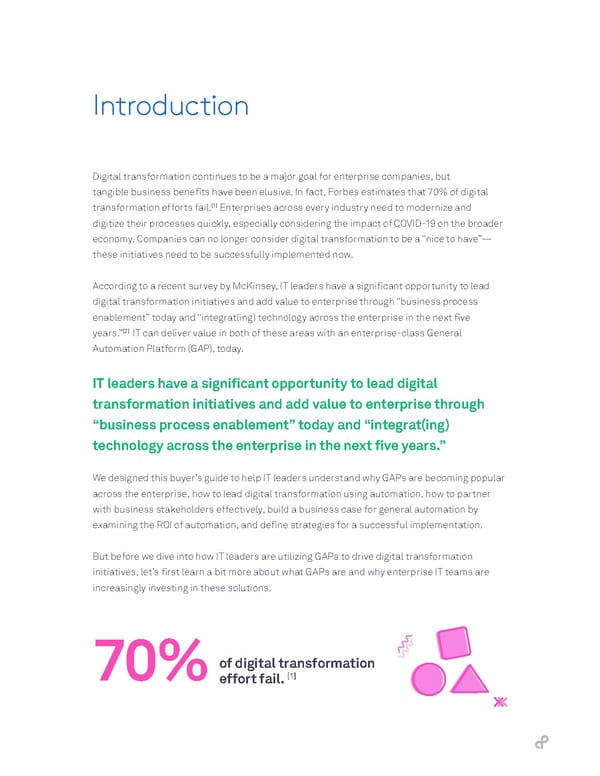Introduction Digital transformation continues to be a major goal for enterprise companies, but tangible business benefits have been elusive. In fact, Forbes estimates that 70% of digital [1] transformation efforts fail. Enterprises across every industry need to modernize and digitize their processes quickly, especially considering the impact of COVID-19 on the broader economy. Companies can no longer consider digital transformation to be a “nice to have”— these initiatives need to be successfully implemented now. According to a recent survey by McKinsey, IT leaders have a significant opportunity to lead digital transformation initiatives and add value to enterprise through “business process enablement” today and “integrat(ing) technology across the enterprise in the next five [2] years.” IT can deliver value in both of these areas with an enterprise-class General Automation Platform (GAP), today. IT leaders have a significant opportunity to lead digital transformation initiatives and add value to enterprise through “business process enablement” today and “integrat(ing) technology across the enterprise in the next five years.” We designed this buyer’s guide to help IT leaders understand why GAPs are becoming popular across the enterprise, how to lead digital transformation using automation, how to partner with business stakeholders effectively, build a business case for general automation by examining the ROI of automation, and define strategies for a successful implementation. But before we dive into how IT leaders are utilizing GAPs to drive digital transformation initiatives, let’s first learn a bit more about what GAPs are and why enterprise IT teams are increasingly investing in these solutions. of digital transformation 70% [1] effort fail.
 IT Buyers Guide Page 2 Page 4
IT Buyers Guide Page 2 Page 4